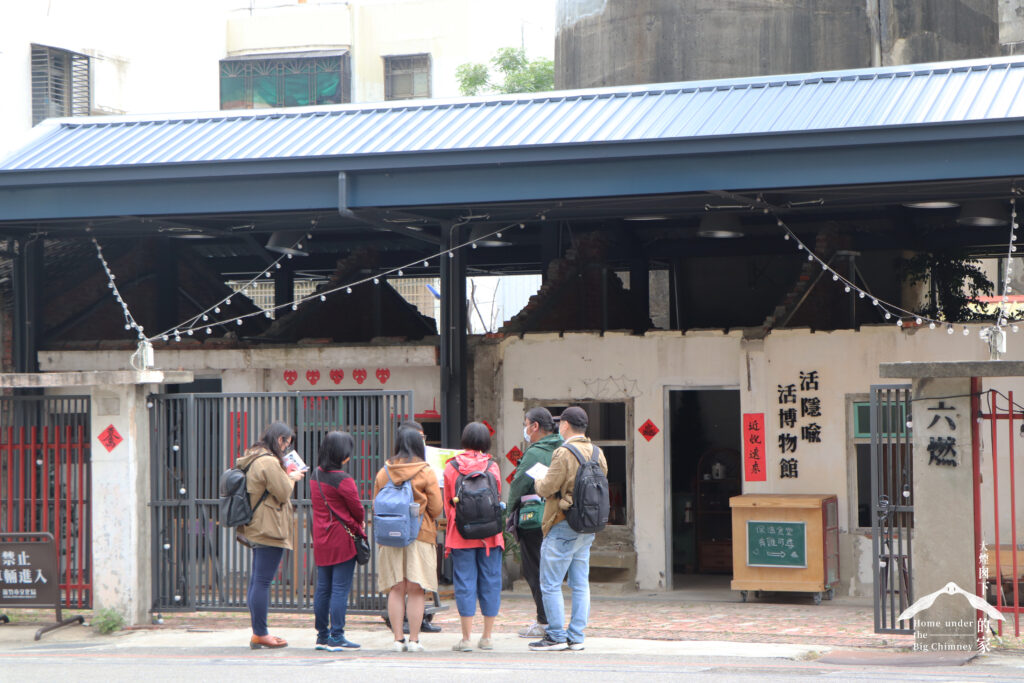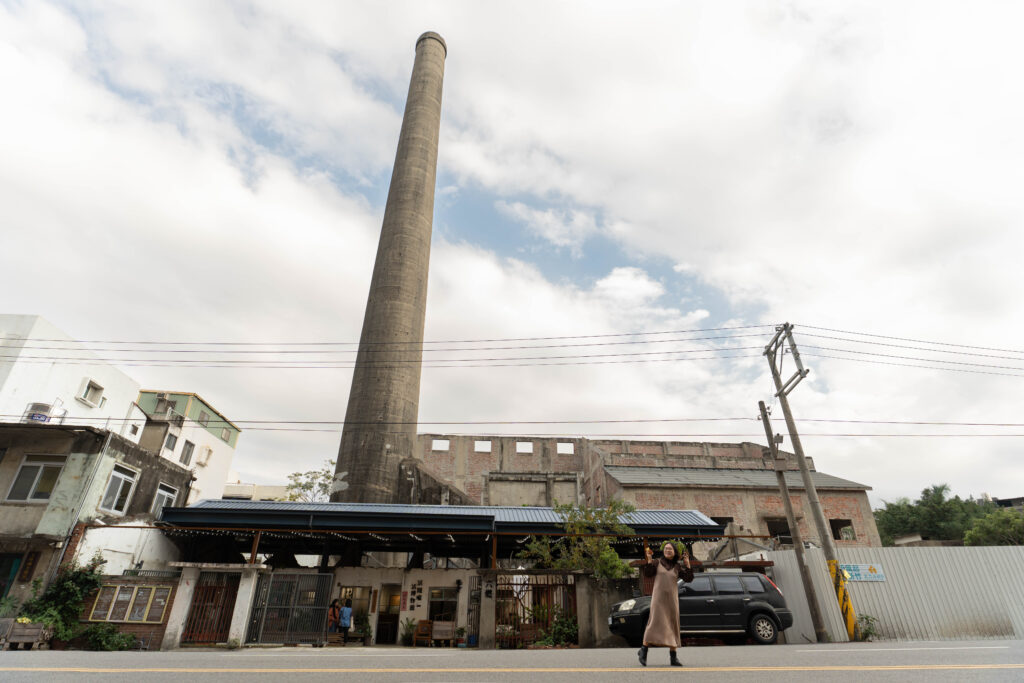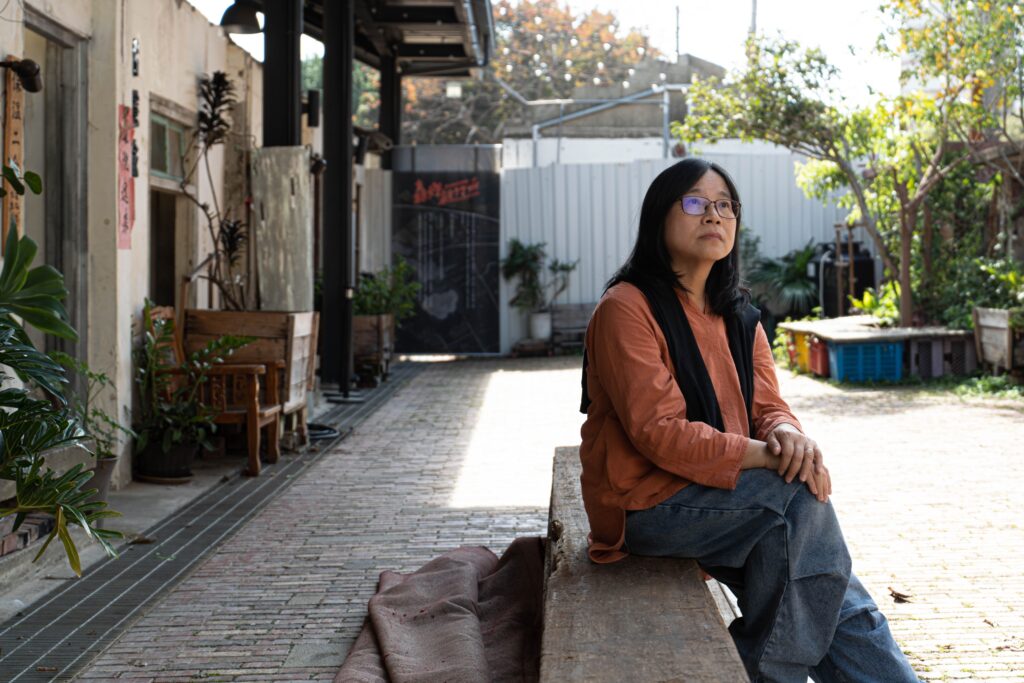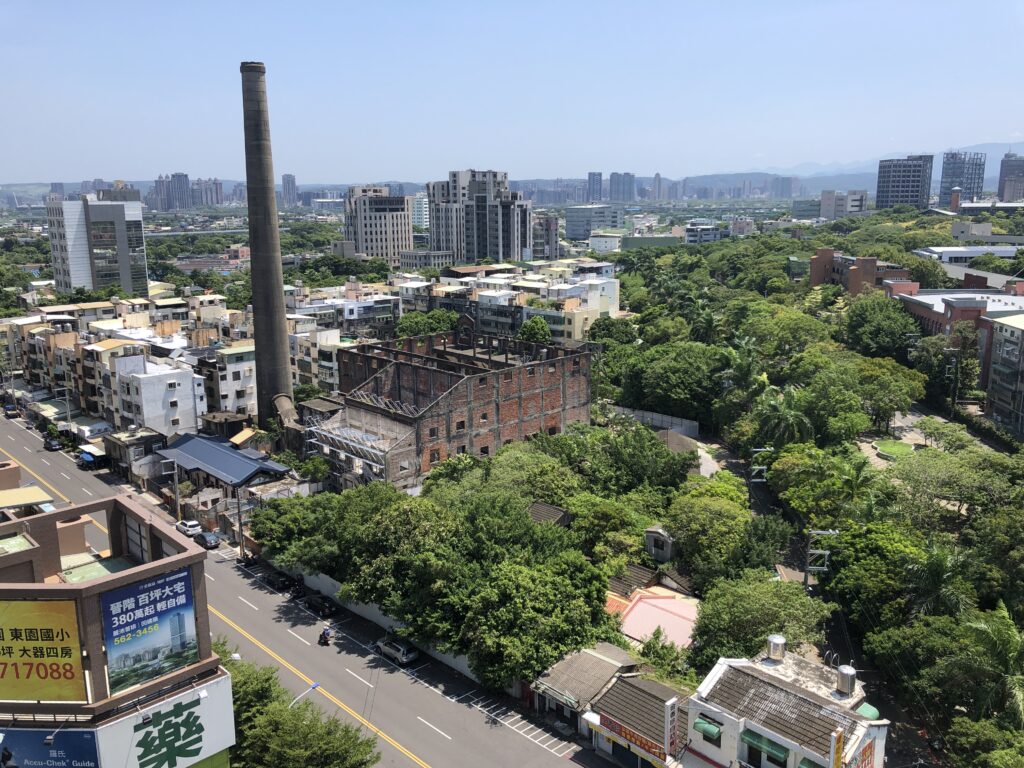The “Sixth Fuel Factory Cultural Park” stands as one of the few remaining WWII relics well-preserved in Hsinchu, Taiwan. It is slated for transformation into a Cultural Park and is expected to be fully accessible to the public by 2026 under the auspices of the Cultural Affairs Bureau of Hsinchu City. Dr. Wen-Shu Lai, Director at the Institute of Applied Arts of National Yang Ming Chiao Tung University (NYCU), has been devoted to the “Hsinchu Living Museum” Project for years. According to Dr. Lai, rooted in the philosophy of the “Living Museum,” this project represents the university’s social responsibility. Although the process from awakening identification to cultural inheritance is challenging, it remains immensely valuable.

Unfolding a Vital Page of the Taiwanese Modern Technology History from a Speech
The sixty-meter-tall chimney is a prominent landmark on the Jianmei Road in Hsinchu, which was originally one of the extensive heartlands of the “Imperial Japanese Navy’s Sixth Fuel Factory Hsinchu Branch” (the Sixth Fuel Factory thereafter) in the Japanese Colonial Period, specializing in synthesizing isooctane needed in WWII. The biomass energy generated by the factory laid the foundation for the burgeoning high-tech industry in Hsinchu. The former military-industrial factory gradually transformed into a military dependents’ village over the years, and by 2013, all the residents had been relocated. During this period, many scholars, including Dr. Chia-Lin Tsao, the Dean of the School of Design at Chung Yuan Christian University, and Dr. Wen-Shu Lai from NYCU, have constantly devoted themselves to this place. Dr. Lai said that the speech given by Dr. Chia-Lin Tsao in 2015 inspired her imagination on the future of this land. From then on, the NYCU Sixth Fuel Factory Museum and Good-Neighboring Team (NYCU Sixth Fuel Factory Team thereafter) initiated the “Hsinchu Living Museum” Project. From 2018 till now, more than six years, the NYCU Sixth Fuel Factory Team has constantly brought the interpretation right of the history to the people who live in this place through diverse activities, exhibitions, and publications, expecting that the historic sites can be revitalized through the communication of the community.
To deepen people’s understanding of the history, architectural features, and ecological landscapes of the Sixth Fuel Factory, the six military dependents’ houses by the factory became the base for the NYCU Sixth Fuel Factory Team after a simple renovation. In addition to various art forms (music, theater, exhibitions, performances, and documenta, etc.), publications, and filmmaking constantly organized by the NYCU Sixth Fuel Factory Team to document the conservation works, the whole project is even more precious in the participation of localities. For example, nestled in a corner of the base lies a chicken coop, home to six hens, added to replicate the living conditions of the military dependents’ villages from the past. An old lady in her nineties took her children and grandchildren to visit the place and thoroughly talked about her life in the past to connect the intergenerational relationship. Nearby restaurants provide their remaining food to serve as the chicken feed, while the NYCU Sixth Fuel Factory Team reciprocates by returning the eggs laid by the hens. This reciprocal exchange not only fosters a sense of community but also integrates the base of NYCU Sixth Fuel Factory Team into localities’ daily lives. Mr. Kun-Yu Wang, a former Taiwanese employee of the Sixth Fuel Factory, still remembers the song of the factory— “六燃の歌” (the Song of Sixth Fuel Factory) from that time. Luckily, these precious firsthand accounts were reserved through modern technology and recorded in the documentary— “大煙囪我的家” (The Big Chimney, My Home). Coincidentally, teachers and students at Shu Guang Girls’ Senior High School in Hsinchu voluntarily composed the song— “囪囪” (Cong Cong; the Big Chimney), demonstrating how local cultural heritage continues to thrive in the lives of new generations.

Experiencing WWII and the History of the Military Dependents’ Villages through Art Performances and Exhibitions
NYCU Sixth Fuel Factory Team, led by Dr. Wen-Shu Lai, has curated a series of activities to provide visitors with immersive experiences of the important historic moments related to the factory. For example, “For-giving.For-getting” and “Nonuments,” the two performance pieces of the Sixth Fuel Factory Interactive Theater, are collaborative works between the NYCU Sixth Fuel factory Team, the Post Theater from Berlin,and the transArt NYCU. They explore the themes of forgiveness and reconciliation from both local and international perspectives, aiming to prompt audiences to engage in thought-provoking discussions on these complex issues. The AiPOLLING System is seen as an “Easter egg” demonstrating the combination of technology that has been specifically designed within the theater. Audiences are invited to jointly create a digital “WWII monument” exchanged between Taiwan and Japan as a present using the IoTtalk platform and voting system developed by the team led by Dr. Jason Yi-Bing Lin at NYCU. Through collective creation, the two theatrical pieces allowed audiences to picture the Taiwanese WWII history together and consider the meaning of “Monuments” and “Nonuments,” the complexity of politics, and experience the history of WWII and the military dependents’ village from different aspects.
“Art praxis is what we are good at, making it natural for us to raise those difficult issues – whether they are historical, ecological, or cultural – through art, through the International Sixth Fuel Factory Interactive Theater. Via the theatrical pieces to discuss difficult history, the various historical scars carried by everyone can be healed in their participation,” shared Dr. Wen-Shu Lai.

Once you enter the Sixth Fuel Factory, participate in the theater production, or just watch the plays, you are already part of the history.
-Dr. Wen-Shu Lai

Preserving Asian Parti-colored Bats and Bestowing the Biological Value to the Historic Space
In July 2010, a group of approximately seven hundred protected Asian Parti-colored Bats was discovered in the Big Chimney of the Hsinchu Sixth Fuel Factory. They are actually “aboriginals” of the big chimney. This discovery has made the Sixth Fuel Factory not only a culturally valued historic relic but also an important habitat for nationally endangered species for ecology protection. The Asian Parti-colored Bats are known to inhabit inside the fuel factory’s Big Chimney and between the layers under the sheet metal rooftops of the nearby buildings. They come here to breed every year, approximately arriving in March and leaving in September (the Qingming Festival to the Moon Festival).
To facilitate long-term observation and record the ecological changes of the Asian Parti-colored bats inside the Big Chimney, with support from the Bat Association of Taiwan and the Endemic Species Research Institute, Council of Agriculture, Executive Yuan, as well as the Center for Urban Planning and Design at Chung Yuan Christian University, the NYCU Sixth Fuel Factory Team and the College of Computer Science designed an intellectual monitoring system with research and educational function by integrating real-time video surveillance and the IoTtalk platform. It has been installed inside the Big Chimney for ecological observation and research. With artists-in-residence and a variety of activities and publications, the “Asian Parti-colored Bat Ecological Education Space” has been established to showcase related data and research papers. Visitors can deepen their understanding of the various aspects, ecological habits, and risks faced by Asian Parti-colored bats through participation in educational activities. As integral inhabitants of this environment, these bats have become a living legend in the history of the Big Chimney.

At the end of the interview, Dr. Wen-Shu Lai brought up the specialties of the Sixth Fuel Factory, including the origin of the Hsinchu industry and technology, the historic relics of the military villages, the history of WWII, ecological conservation, etc. Every historic site has its unique context. Furthermore, the Chinese word “生” (Living) in the “生博物館” (Living Museum) has multiple meanings including “生活” (living), “生態” (ecology), “生命” (life), and “生產” (production). This place embodies the essence of a “Living Metaphor.Living Museum,” functioning as a dynamic organism. It does not have a fixed definition, making it challenging to replicate in other places. She emphasized that if the “Hsinchu Living Museum” Project established a paradigm to foster resident identification, this would be the best thing to happen. However, from another perspective, what we have learned from the vanish of the historic landscapes and buildings, and the stories behind them may hold even greater importance.

Five Historical Phases of the Imperial Japanese Navy’s Sixth Fuel Factory Hsinchu Branch
(1) 1943-1945 — The Imperial Japanese Navy’s Fuel Factory is one of the few remaining WWII military-industrial relics.
(2) 1949-1957 — A KMT Military Medical Center for soldiers and a training center of the Air Force Engineer Wing. It is a rare complex preserving the legacies of war, technology, and military dependents’ housing culture.
(3) 1957-2013 — It is a historic site of military dependents’ housing and veteran characterized by “embedded houses.”
(4) 2008~2019 — It was registered as a historic building by the Hsinchu City Cultural Affairs Bureau in 2010. Before and after this time, scholars and experts are involved intensively in cultural history surveys and cultural heritage preservation movements.
(5) 2018-current — The NYCU Sixth Fuel Factory Team has been devoted to preserving and reviving this historic site since 2018.
Text adapted from “NYCU Alumni Interview: A Living Museum! A Communication of the Past and Present of the Hsinchu Local History— An Interview of Wen-Shu Lai, the Director at the Institute of Applied Arts” in The Voice of NYCU Alumni (December 15, 2023).
Special thanks to Tasi Yi Tzu, the Project Assistant.
